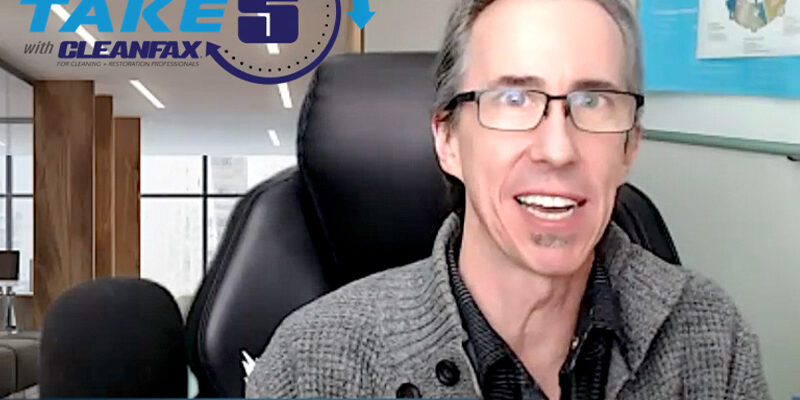The True Cost

This article was originally published online in July 2015.
Do you really and truly know how much it costs to hire or replace an employee in your organization? If you are like most, you’re unable to answer that question at this exact moment… and therein is the problem.
When the decision is made to hire a new employee or replace one that is leaving, you’re not simply agreeing to pay them a salary and benefits. The additional costs of recruiting and training are probably what come to mind, but trust me, there are many more that have to be factored into the equation. And there are variables involved in calculating the exact cost of a new hire.
The importance of this issue
As an owner or manager in our industry, you work hard to add value to your business by ensuring the upmost in client services and revenue generating systems that will provide your organization the opportunity to sustain and grow.
With the demand for extraordinary services at an all-time high, the need for increased productivity is immeasurable. Therefore, the strategic importance of understanding not only the costs associated with the hiring process, but your ability to find and retain the best people possible, is critical.
Actual costs beyond the obvious
When a business decides to hire a new employee, it must consider the costs beyond recruiting and training. We often fail to think through things such as the need to create a new workspace, equipment that might be needed, and in some cases, relocation expenses.
When someone leaves an organization and a replacement is needed, there is also a cost. The tab for human resources’ expenses starts running once an employee announces his/her decision to resign. Much of the expense is in indirect costs such as the loss of training or institutional knowledge, loss of productivity, possible consulting fees, and overtime expense for those covering the vacancy. There is also the cost for time spent organizing their continuation of benefits, conducting an exit interview, meeting with the employee to determine if there’s a retention strategy to persuade him/her to stay at the company, and compensating the employee for unused vacation or sick time.
Think in terms of a project manager leaving your organization. Once his/her resignation is turned in, you may want to develop a targeted recruiting program to find someone with identical skills who can start work right away. This is sometimes easier said than done when the resigning employee has specialized skill sets that are difficult to replace using traditional recruiting methods.
There is no set number on the actual cost of hiring a new employee or filling a vacated position. It depends on the job itself and the benefits that may be part of the overall employee package. Expenses in addition to salary could include health care and/or retirement benefits, taxes, unemployment insurance, and workers’ compensation costs.
Consider this information to help you analyze and determine additional cost factors that apply to your organization.
Recruiting costs start with preparing a job description that accurately reflects the current job duties and responsibilities. When an employee has been in the same role for an extended period of time, it’s quite possible that the tasks and responsibilities may have changed since they were originally hired. Therefore, prior to advertising the job vacancy, a review of the job description is necessary to ensure that additional duties and responsibilities are added as part of a revised job description.
Other costs:
- Recruiting Process Costs
Consider the time spent…
- Formulating and placing the employment ad.
- Sourcing resumes.
- Reviewing resumes.
- Interviewing potential applicants.
- Preparing the employment offer.
- Additional Screening/Hiring Costs
Consider the cost of…
- Conducting background checks.
- Individual skills assessments.
- Possible travel expenses for new hire or internal hiring manager.
- Possible relocation expenses for new hire.
- Additional bookkeeping: payroll, benefits enrollment, 401k, etc.
- Additional record keeping for federal, state, and local government agencies.
- Training Costs:
Consider the expense for…
- Orientation and on-boarding, including materials.
- Total time spent in training, including the trainer’s salary.
- Percentage of lost productivity until new hire is productive.
- The amount of time the manager needs to spend with the new hire.
Something to consider
I spend a lot of time working with clients to help them understand the real cost of hiring and the importance of retaining versus replacing. Beyond the obvious “hard” costs associated with advertising, background checks, and interviewing are many other “soft” costs that are often overlooked. One of the biggest is the time involved. All of the steps involved in hiring a new employee or replacing one who has left take time…and time has a cost.
According to an article by Will Helmlinger of The Resource Development Group, “The cost to replace one Customer Service Representative earning $18,000 annually is nearly $58,000.″
A study conducted by the Institute for Research on Labor and Employment, University of California, Berkeley on evaluating the effects of the U.S. Family Medical Leave Act found that “turnover costs for a manager average 150% of salary, including tangible costs of hiring new workers and relocation, and intangible costs such as the new worker’s inefficiency and lost productivity while the job is vacant.”
Take the time now to look at your company’s retention strategy and determine if it’s working for you. If not, the obvious next step is to implement an effective retention plan to work toward retaining and rewarding those who are performing well in order to minimize your hiring costs going forward.
Scott Tackett joined Violand Management Associates (VMA) with a 32-year background in manufacturing, human resource management and organizational leadership. He is currently a business development advisor for VMA where he works closely with business owners and their key management staff as both a business consultant and an executive coach. To learn more about VMA’s services and programs visit Violand.com or call (330)966-0700.












